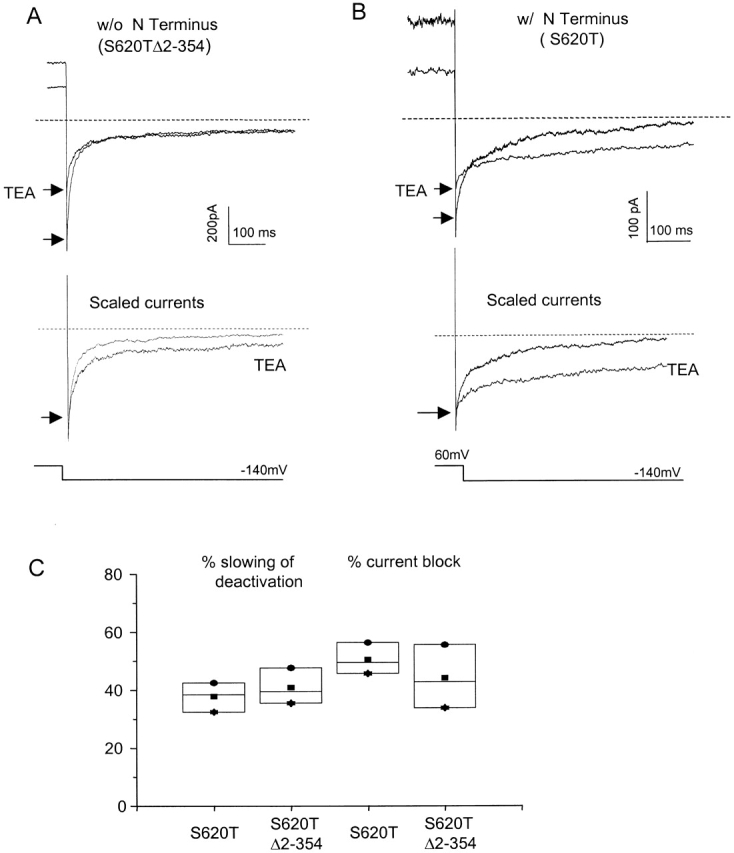Figure 4.

The amino terminus does not alter the ability of TEA to block current or to slow deactivation. (A, top) Tail currents from S620TΔ2-354 truncated channels evoked at −140 mV after depolarization to 60 mV, before and after application of 1 mM TEA to the internal bath solution. Arrows point to the instantaneous tail current levels. (Bottom) The same currents scaled to their peak amplitudes to illustrate the slowing of apparent deactivation rate by TEA. (B, top) Tail currents from channels with amino termini intact under same conditions as in A. (Bottom) The same currents scaled. (C) Box plot shows that mean values for percent slowing of deactivation (left) are predicted by corresponding percent current block (right) for both S620TΔ2-354 truncated channels and S620T channels with intact amino termini, indicating a lack of competition between the amino terminus and TEA in open-channel block (n = 3 for each construct, P > 0.2). The competition models describe a channel that cannot close until the blocking particle vacates its binding site (Scheme I), where C, O, and B are the closed, open, and blocked states, respectively, and β is the rate constant of the open-to-closed transition. SCHEME I Channels in the blocked state are unavailable for closing until they return to the open, unblocked state, and so the apparent deactivation rate βapp is reduced according to the expression βapp = f · β, where f is the fraction of channels in the open state. At the very negative voltages studied, we assume little return from the closed to the open state and βapp ≅ 1/τfast (see methods). The forward and reverse rates of block are assumed to be fast relative to β.
